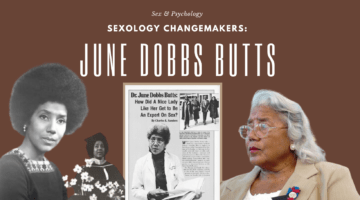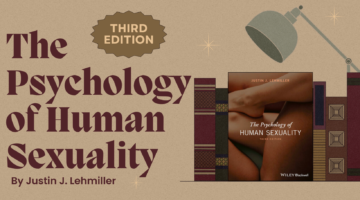Ovulating Women Fantasize About Sex More Often
March 26, 2012 by Justin Lehmiller
There is a growing body of research indicating that women’s sexuality changes as they near ovulation. For example, ovulating women tend to dress in sexier clothes and reveal more skin [1], which may help to explain why female exotic dancers earn bigger tips during the fertile phase of their menstrual cycle! A new study suggests that ovulation may also change how often women think about sex and the content of their sexual fantasies [2].
In this study, 27 heterosexual women completed an online diary every day for one month in which they reported how many sexual fantasies they had during the previous day and described the content of each fantasy. All of the women were between ages 18 and 30, did not currently have long-term relationships, and were naturally cycling (i.e., they were not taking any form of hormonal contraception, such as the pill). Each woman was given a urine test to confirm the exact time of the month they were ovulating.
Researchers found that women reported having significantly more sexual fantasies during ovulation and, further, that these fantasies were more sexually arousing than the fantasies women had during other phases of their cycle. However, not only did the frequency of their fantasies change, but the content changed too. Specifically, men appeared more often in female fantasies during ovulation. One might assume this means that the fantasies became more overtly sexual, but that wasn’t the case. In fact,during ovulation, the sexual content of women’s fantasies decreased while emotional content increased! This runs contrary to previous research findings suggesting that heterosexual women pay more attention to the male body during ovulation [3]. However, this may be a function of the fact that these studies employed very different methodologies and samples (for one thing, the new study focused mostly on female singles, while the previous study only included women in committed relationships).
In summary, ovulation appears to have major effects on several aspects of female sexuality. As a result, researchers seeking to study “what women want” would be well-served by taking these potential menstrual cycle changes into account.
Want to learn more about Sex and Psychology ? Click here for previous articles or follow the blog on Facebook (facebook.com/psychologyofsex), Twitter (@JustinLehmiller), or Reddit (reddit.com/r/psychologyofsex) to receive updates. You can also follow Dr. Lehmiller on YouTube and Instagram.
[1] Haselton, M. G., Mortezaie, M., Pillsworth, E. G., Bleske-Rechek, A., & Frederick, D. A. (2007). Ovulatory shifts in human female ornamentation: Near ovulation, women dress to impress. Hormones and Behavior, 51, 40-45. doi: 10.1016/.yhbeh.2006.07.007
[2] Dawson, S. J., Suschinsky, K. D., & Lalumiere, M. L. (2012). Sexual fantasies and viewing times across the menstrual cycle: A diary study. Archives of Sexual Behavior, 41, 173-183. doi: 10.1007/s10508-012-9939-1
[3] Gangestad, S. W., Thornhill, R., & Garver-Apgar, C. E. (2010). Fertility in the cycle predicts women’s interest in sexual opportunism. Evolution and Human Behavior, 31, 400-411. doi: 10.1013/j.evolhumbehav.2010.02.003
Image Source: iStockphoto

Dr. Justin Lehmiller
Founder & Owner of Sex and PsychologyDr. Justin Lehmiller is a social psychologist and Research Fellow at The Kinsey Institute. He runs the Sex and Psychology blog and podcast and is author of the popular book Tell Me What You Want. Dr. Lehmiller is an award-winning educator, and a prolific researcher who has published more than 50 academic works.
Read full bio >


